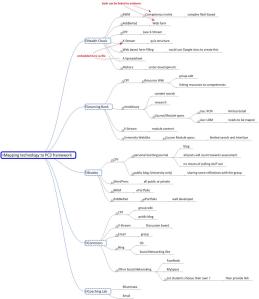Cluster meeting @ Bolton today, good to catch up. The general consensus is that the current economic climate, potential political changes have refocused higher management decision processes which are affecting projects in both positive and negative ways. There is still an overriding concern that a single project is not enough to instigate full institutional change. However alongside this there are several smaller endeavours that have had big up take at various levels.
Tony demonstrated an interesting development for distance learners that enabled them to access and perform laboratory equipment to perform experiments remotely. For me the interesting thing was his use of GoogleSites to build a disposable VLE, using a selection of freely available tools which are accessed via drag and drop chunks of code. Given the enrolment issues we have had with the universities VLE this might be the way forward for running and adapting to the small cohorts on the PLC module. I will have to play with this over the summer.
The afternoon was focused on XCRI and possible adaption to use with module definitions and learning outcomes. This was quickly dismissed as unsuitable. Competencies and learning outcomes will most likely require their own set of attributes. Discussion moved to the possibility of linking competencies to learning outcomes. Suggested that we need to know more about what research has already been done in this area. It is suspected that there are currently active projects in this area that we are currently unaware of particularly in the international arena. The need for some form of online resource to host this information was identified. From this discussion I suspect that PLC will be able to input on this debate, usually institutional v industry, by providing the student perspective on how they view their skills and abilities and their perception of what their profession requires.

















